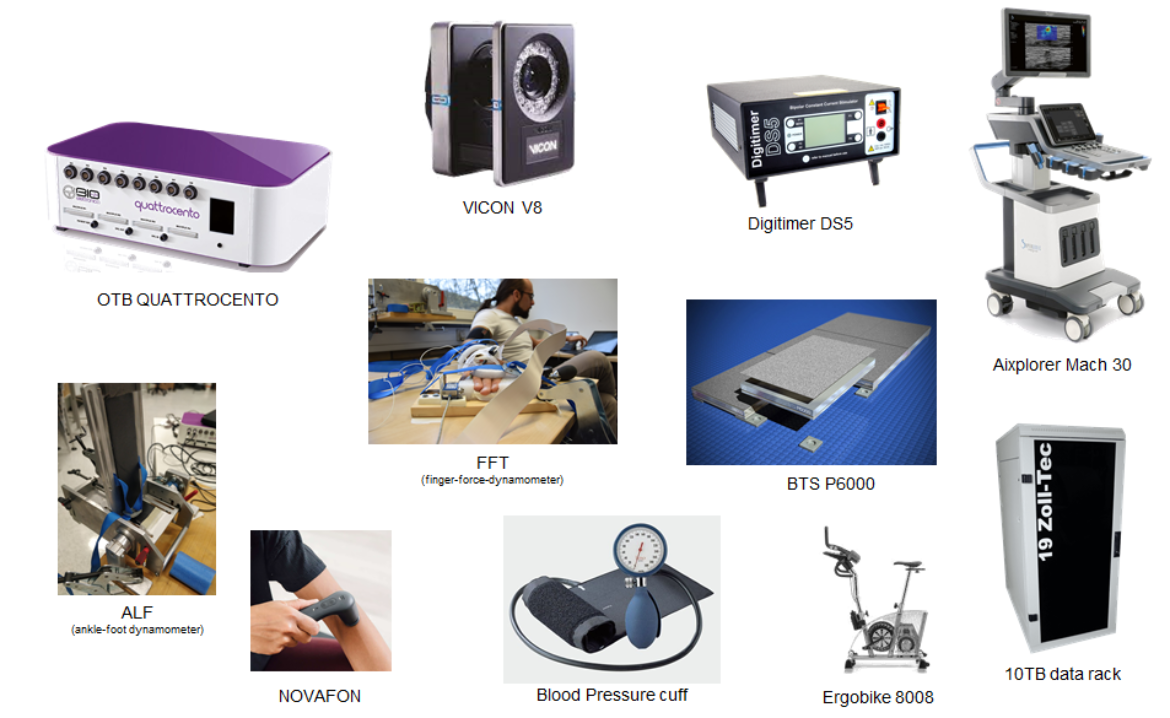- Surface and high-density Electromyography
-
Electromyography (EMG) is used to detect the electrical activity of muscle fibres, which react 1:1 to the command of their respective alpha motor neurons in the spinal cord. Each muscle fibre is connected to one and one only motor neuron, each motor neuron is connected to several (up to thousands) muscle fibres. The ensemble of one motor neuron and the fibres it innervates, is called a “motor unit” (MU). Motor units are the atomic components of human movement. Muscles act as biological amplifiers of the activity of individual spinal motor neurons and allow for a convenient, non- (or minimally-) invasive, precise and reliable measurement of the efferent information.
At NML we are specialized in surface EMG (OT Bioelettronica QUATTROCENTO) and, in particular, in multichannel bipolar EMG (used to extract the so called “muscle synergies” out of the activity of numerous muscles at once) and high-density EMG (where tens to hundreds of spatially-dense sensors are placed on a single muscle, to decode the activity of the individual motor units that are active during a certain task).
- Ultrasonography and shear-wave elastography
-
The NML includes a SuperSonic Imagine Aixplorer MACH 30 ultrasound machine with which high resolution images of muscles and other human soft tissues can be obtained. It allows B-Mode imaging for precise anatomical considerations and doppler image mode for blood flow measures. Furthermore, the ultrasound system is capable of Shear Wave Elastography (SWE) imaging allowing to compute the stiffness of tissues. Here, the Young modulus of tissues can be acquired for values up to 600 kPa.
- Motion capture and dynamometry
-
The NML is equipped with a 8-cameras VICON V8 system, capable of tracking infrared-reflective markers with sub-millimetric precision and a set of two 6-components force plates (BTS P6000) for recording ground reaction forces during postural and locomotion tasks. The data generated by the systems is used for determining inverse kinematics and dynamics.


